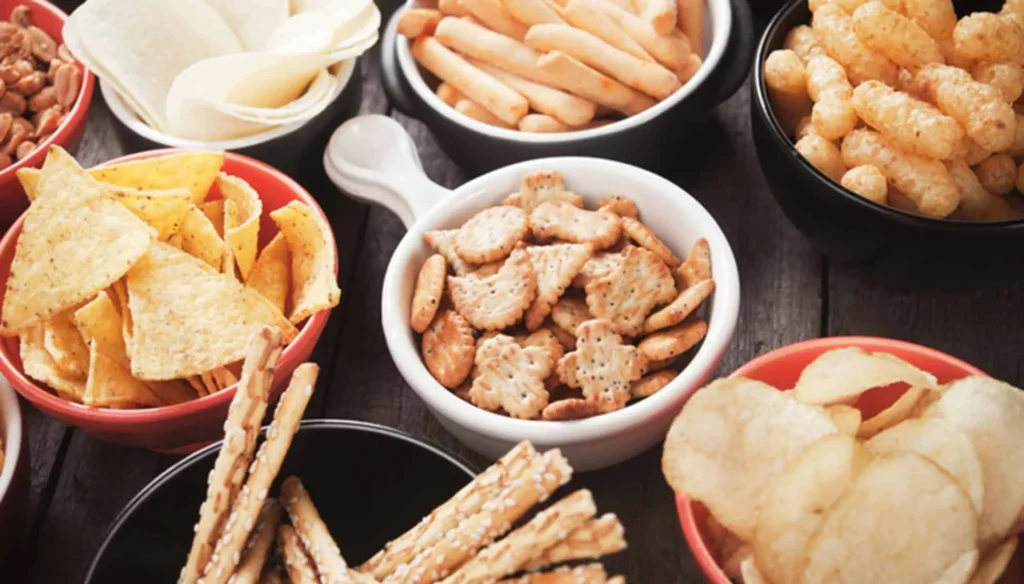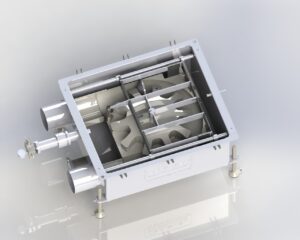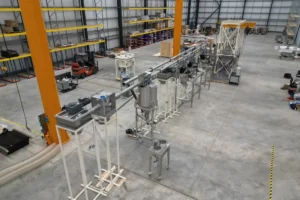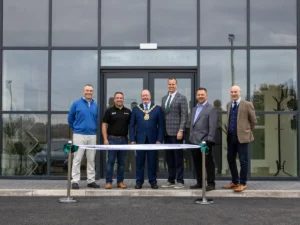What are the most commonly used technologies and equipment in processing snack foods? In this blog post, we will talk about several basic processes that lead to ready-to-go, convenient, and tasty snack products that are easily accessible and affordable. We will also focus on emerging snack food processing and packaging technology that fits the new wellness-oriented food trends.
Processing Snack Foods – Different Categories of Snacks
Although people usually classify snack foods into two groups (sweet and salty), these dietary products may also be categorized based on the food processing technique used in their production. The first-generation snacks are produced by simple extrusion without further processing. Snacks like nuts, dried fruit, potato chips, or popcorn fall into this category.
However, the majority of snacks are second-generation products. This means they are high-fiber, high-protein snack products made of extruded materials like puffed corn products, corn chips, curls, and balls. Third-generation snacks refer to fried and flavored snacks produced from extruded pellets, such as breakfast cereal. Snack pellets are non-expanded and made from raw materials like potatoes, cereals, and vegetable powder. Manufacturers further process these semi-finished products to create ready-to-eat snacks.
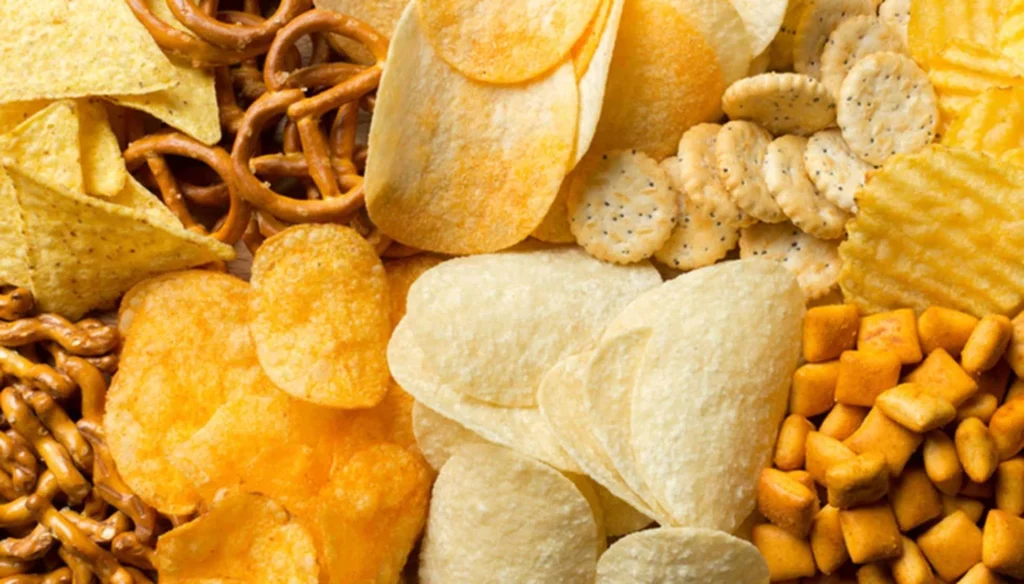
Which Technologies Are Commonly Used in Snack Food Processing?
Before any production technologies are employed, the product needs to be designed and tested. This involves much forethought and planning. Once the product is proven to be successful, the next step is production. Of course, the exact blend of materials has to be maintained from day one – consistency is key. Now, let’s explain the most important snack food processing technologies.
- Extrusion Process
Extrusion is a production process that happens in an extrusion cooker – a high-temperature, short-time, plug-flow bioreactor that combines various operations into one unit. The extrusion process involves several steps:
- Continuous mixing of raw materials (like various grains with water),
- Shearing or kneading,
- Heating and cooking using the heat released in the extruder,
- Puffing is the last stage (a sudden expansion of plasticized and gelatinized starch from a pressure chamber).
Compared to all other categories, the extruded snack category has the greatest potential for growth. Extruded snacks can be made in innovative ways that capture the consumer’s imagination. The perfect examples of extruded snacks are three-dimensional snacks – alphabet, cartoon, or animal-shaped snacks.
Manufacturing a successful extruded snack is a fine balance between the manufacturer’s production abilities, quality control and economics, and consumer needs (like interests and tastes). What plays an important role in the product’s selling price is the cost of raw materials that are used. So, financially-wise, it’s best to use low-cost materials to manufacture a successful snack.
- Co-Extrusion Process
Co-extrusion was introduced to the food processing industry in 1984. In the co-extrusion process, two different materials get extruded from a single die. They can come from one extruder and one pump or from two extruders. Using this process, snack food manufacturers can create a snack with two different textures, colors, or flavors.
The most common example of a product made in this process is a cereal-based outer tube with a cheese filling. On the market, you can find three types of co-extruded snack foods:
- Cereal-based tubes with a water-based filling,
- Cereal-based tubes with a fat-based filling,
- Cereal-based tubes with a cereal-based filling.
However, due to the migration of oil and moisture from the filling to the outer shell, it’s important to note that these snacks have a limited shelf life.
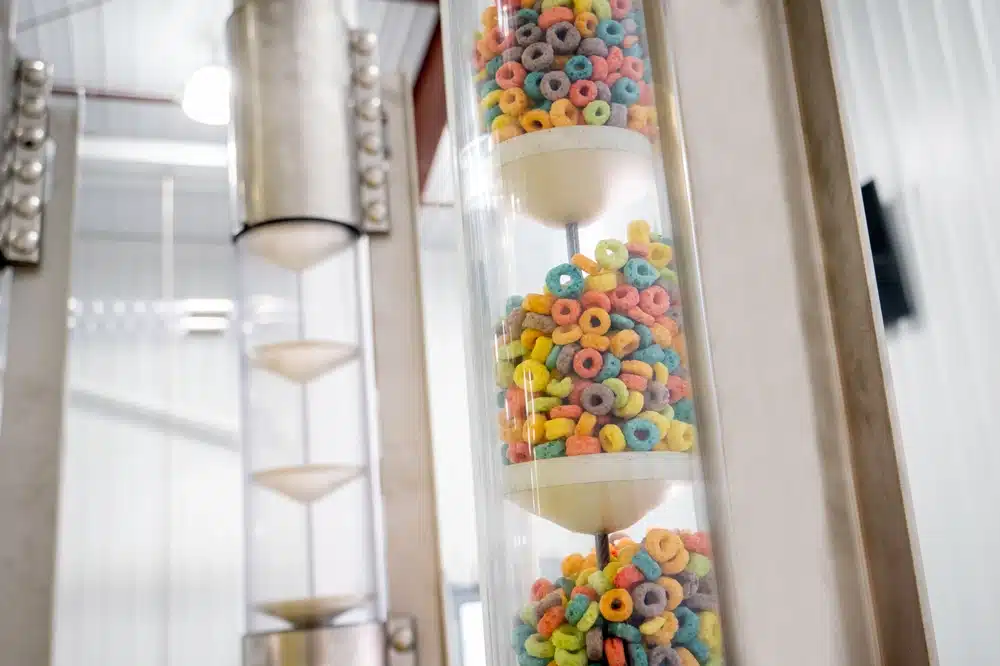
- Expansion Process
This snack category is also called second-generation snacks or collets. Expanded snacks are high-protein, high-fiber, and low-calorie foods that are made on high-shear extruders. Some examples include potato sticks, onion rings, corn curls, and three-dimensional snacks. They can also be seasoned with various flavors such as sugars, salt, and oil.
The quality of expansion-manufactured snack foods depends on the raw material used in the formulation and the conditions of operation of the extruder. There are other factors that can affect the degree of puffing of snacks during the process, such as cereal particle size, dough residence time in the extruder barrel, and amount of moisture in the feed material.
- Baking Process
Another example of extruded expanded snack foods is baked collet. Examples include potato sticks, onion rings, and baked corn curls. They can be made with different tuber flours and cereal grains. To make healthy snack foods, bran, fibers, protein, and cellulose can be blended with cereal grains (making up to 20% of the material).
As for potato sticks, they are usually made by mixing potato flour with rice or corn flour. The baking process involves cooking snacks with heat transferred through the air by convection, conduction, or radiation. The effectiveness of each of these methods depends on the oven type and product design.
- Frying Process
The most familiar extruded snacks in today’s snack market are fried collets, which get their specific twisted puffed shape thanks to a special die arrangement. Fried collets are produced on collet extruders, then fried in vegetable oil and coated with a flavor. During the frying process, the level of moisture reduces from 8% to 2%.
Snack producers may use continuous fryers for large-scale production (over 5000 lb/hour throughput), while batch fryers are convenient for small-scale producers (less than 200 lb/hr). The material most commonly used for producing fried collet is corn meal.
- Drying Process
Certain products, like puffed snacks, become crispy through the drying process. These snacks need to be dried after extrusion until the moisture level drops under 4%. This way, puffed snacks gain satisfactory texture and storage stability. Drying process control plays a significant role in ensuring that moisture does not go above or below the determined level.

The Necessary Equipment for Snack Food Production
What kind of equipment is needed for high-quality snack production? Granule, powder, or oil applicators, as well as electrostatic salters, coating tumblers, cheese sprayers, and powder dispensers, are specialized equipment that is the key to the flavoring process. Using these materials enables manufacturers to create various snacks from the same base.
When it comes to preserving raw material quality, moving and storage equipment are essential. Inadequate storage of natural materials used in snack production may seriously affect their quality. For example, dark spots may appear on potato or corn chips, as well as french fries, if the potatoes used in the production process are not stored properly.
Packaging should ensure that the finished product has a long shelf life. Also, process control needs to ensure that the packaged snack weight is close to the value specified on the package. Lastly, we should mention nut processing systems, which include various sorters, blanchers, roasters, and coolers.
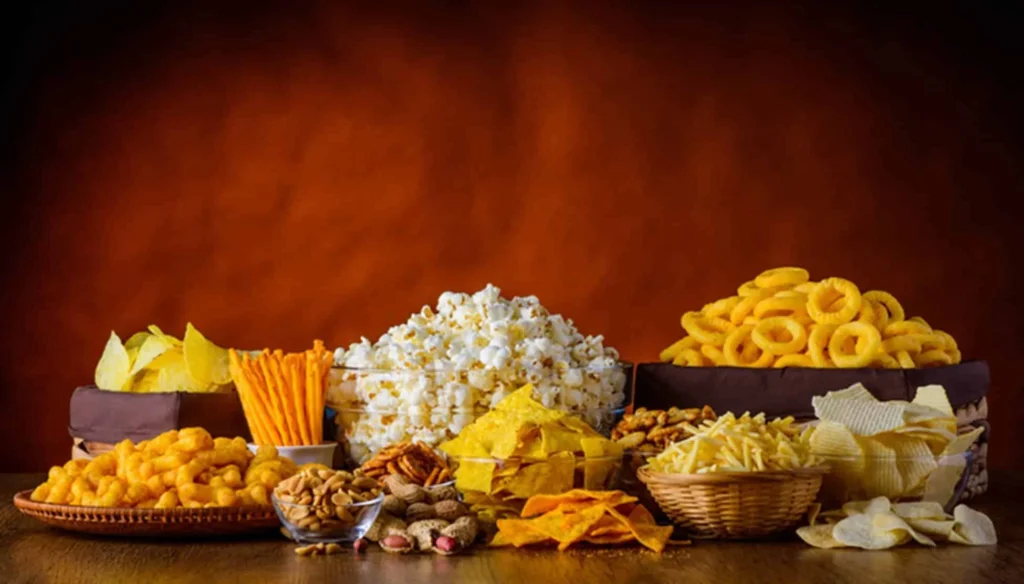
New Process Equipment and Packaging Technologies That Meet the Market Demand
There is an increased demand for more nutritious food products, which drives the increased investment and innovation to create new products in terms of different forms, flavors, and tastes. Therefore, manufacturers of snack foods tend to implement new technologies to meet these demands. Here’s a little bit about some modern technologies that will support snack companies in achieving these goals.
Vacuum Frying Technology
Frying technology has improved to enhance the nutritional values of processed and packaged snacks. For example, batch frying is a technique that produces snack foods with low fat and acrylamide levels. Acrylamide is a potentially carcinogenic substance that appears when starchy raw materials fry at high temperatures for a long time.
During the vacuum frying process, the frying vessel is enclosed, and the water temperature is below 100°C due to the reduced pressure. This way, ingredients continually fry at low temperatures, preventing the appearance of acrylamide and the saturation of oil, resulting in a nutritious finished product.
Flexible Packaging Machines and Systems
Snack’s packaging has shifted from share-size bags to single-portion packages. This change requires advanced packaging machines that use flexible packaging materials, sizes, high speeds, and lower reject rates. By implementing these innovative systems, snack food companies will be able to use better packaging materials and produce smaller-sized products that comply with the WHO guidelines.
Tubular Cable Drag Conveying Systems
Packaging size reduction requires additional modification of other parts of processing technology to ensure that the packaging line itself can handle the produced amounts. This is why snack producers should consider investing in conveyor systems, like Cablevey Conveyors, to ensure gentle and sanitary moving of specific loads through various production stages.
This advanced conveyor belt system and bulk material handling equipment offer a wide range of conveyor capacities to ensure safe material handling and a safe environment in different snack production stages. High-capacity tube conveyors with small 2-inch diameters are perfect for moving ingredients like cookie crumbs or various seeds. On the other hand, a high-volume 8-inch diameter belt conveyor system can gently and safely move materials like peanuts, in-shell walnuts, or puffed rice breakfast cereals.
When the product is designed, tested, and proven successful, snack food manufacturers need to maintain the exact blend of materials from the very beginning. Recipe-makers, food designers, and engineers employ a stringent set of standards to build, design, refine, and maintain specific blends and ratios of ingredients.

Reach Out to Cablevey Conveyors and Get an Industrial Conveyor Belt for Food Processing
Snack food manufacturers can achieve sustainable, safe, and fast material distribution throughout the processing facility by using modern conveyor systems such as Cablevey’s. Our conveyors will notably reduce product damage while simultaneously reducing waste.
Whether you need a cabled tubular conveying system or a simple conveyor belt for the warehouse that will ensure your materials move safely through different production stages without breaking, Cablevey Conveyors is the company to reach out to. With our equipment by your side, the precious products will not be broken, beaten, or squeezed while being moved through the various processing stages – contact us and improve your production process.
FAQ
What Is the Extrusion Process in Snack Food Processing?
Extrusion is a process involving continuous mixing of raw materials, shearing or kneading, heating and cooking using heat released in the extruder, and puffing. It produces innovative snacks, such as three-dimensional, alphabet, cartoon, or animal-shaped snacks.
How Does Co-extrusion Differ From the Standard Extrusion Process?
The co-extrusion process involves extruding two different materials from a single die, producing snacks with two different textures, colors, or flavors. An example is a cereal-based outer tube with a cheese filling.
What Is the Expansion Process?
This refers to the production of collets, or second-generation snacks. These snacks are low-calorie, high-protein, and high-fiber foods made on high-shear extruders. Examples include potato sticks, onion rings, and corn curls.
What Are the Primary Methods of Snack Food Cooking?
The main methods are frying, baking, and drying. Frying gives specific puffed shapes to snacks, baking uses heat transfer methods like convection, conduction, or radiation, and drying ensures snacks become crispy by reducing moisture levels.
What Equipment Is Essential in Snack Food Processing?
Equipment like oil, granule, or powder applicators, coating tumblers, electrostatic salters, and cheese sprayers are vital for flavoring. Additionally, moving and storage equipment, measuring and weighing tools, and nut processing systems play significant roles in the production process.
Are There New Technologies in Snack Food Processing?
Yes, there are new technologies in snack food processing – to meet the demand for nutritious and sustainable products, technologies such as vacuum frying, flexible packaging machines, and tubular cable drag conveying systems have been introduced.
What Are the Benefits of Using Cablevey Conveyors in Snack Food Production?
Cablevey Conveyors ensure gentle, safe, and sanitary movement of materials through various production stages, reduce product damage, reduce waste, and ensure energy savings.
Why Is There a Shift Towards Single-Portion Packages in Snack Packaging?
This change complies with WHO guidelines and reflects a trend towards health-conscious consumption, where consumers prefer portion-controlled snacks to manage their dietary intake.
How Do Snack Food Manufacturers Ensure Consistency in Their Products?
Manufacturers maintain a stringent set of standards, with recipe-makers, food designers, and engineers working collaboratively to ensure the exact blend and ratios of ingredients are consistent from the beginning of production.
What Challenges Do Snack Food Manufacturers Face When Introducing New Technologies?
Introducing new technologies often requires significant investment in both equipment and training. Manufacturers must ensure these technologies integrate seamlessly with existing processes, do not compromise product quality, and deliver a return on investment. Additionally, they need to consider consumer acceptance, ensuring that the final product aligns with market demands and preferences.
How Do Modern Snack Food Processing Technologies Address the Trend Towards Health and Wellness?
Modern technologies are increasingly designed to enhance the nutritional value of snacks. For instance, vacuum frying technology produces snack foods with lower fat and acrylamide levels, ensuring a healthier product. Furthermore, advanced packaging machines allow for single-portion packaging, promoting portion control and reducing overconsumption. These advancements aim to provide consumers with healthier snack options without compromising taste and quality.

